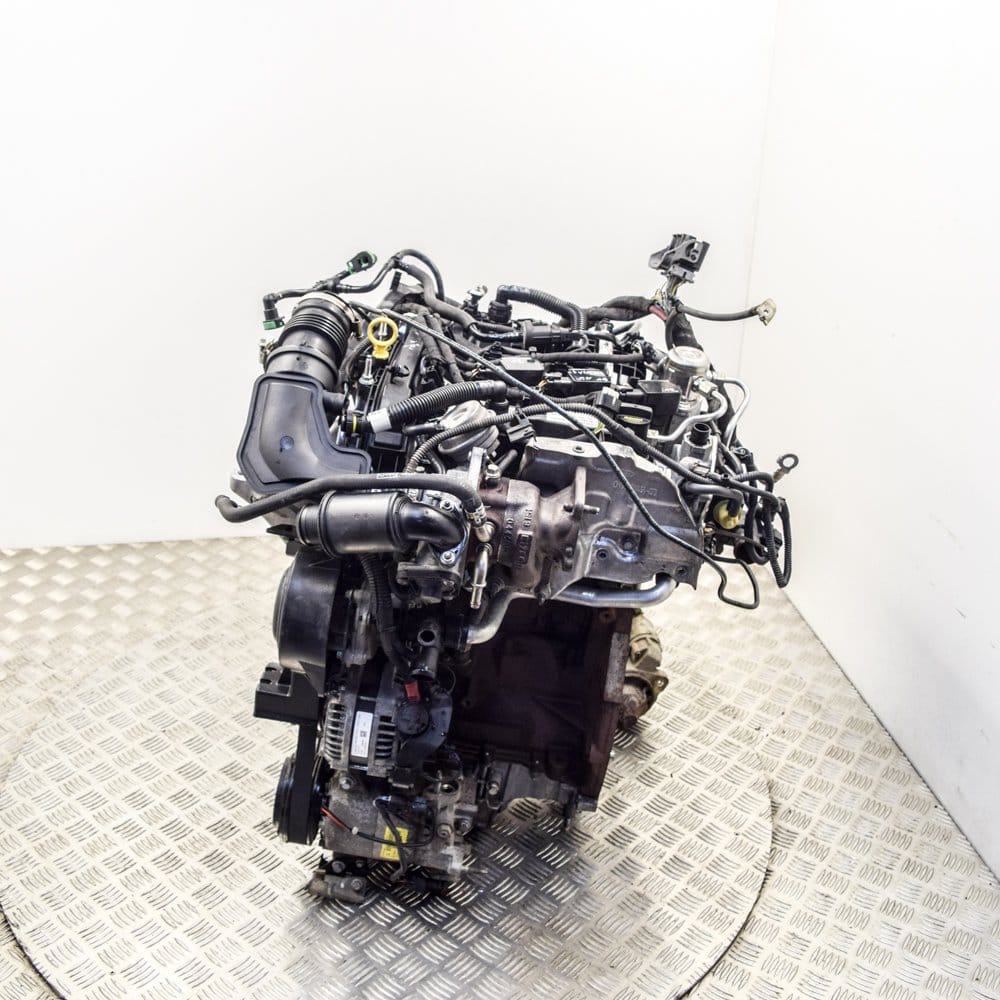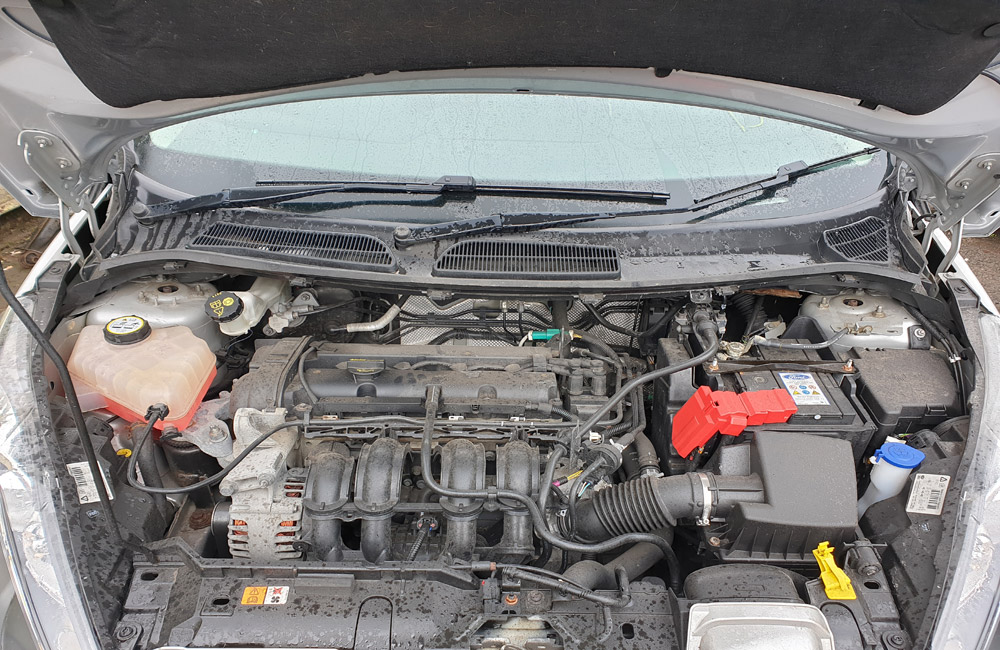Why Choosing the Right Ford Fiesta Engine Parts Matters for Longevity
Wiki Article
Exploring the Development of Engines: From Classic Designs to Modern Marvels
From the first heavy steam engines that powered the Industrial Change to the appearance of interior burning engines that transformed wheelchair, each phase has added to better effectiveness and capability. As we take a look at these milestones, one must take into consideration how the future of engine style may unravel, testing our perceptions of power and effectiveness.The Birth of Engine Technology
The advent of engine technology marked an essential minute in human technology, changing power conversion and transportation. The earliest engines arised from the requirement to harness mechanical power for functional use, leading to the advancement of gadgets that converted various power types right into activity (ford fiesta engine).The growth of the interior burning engine and the creation of the heavy steam engine militarized a profound change in commercial capabilities. These engines not just improved efficiency but additionally broadened the scope of human wheelchair, enabling extraordinary transport opportunities. The early prototypes laid the groundwork for the mechanical world, assisting in the increase of industries and improving societal structures.
As engine layouts progressed, they progressed and incorporated innovative materials engineering concepts, leading the way for modern growths - ford fiesta engine. The birth of engine innovation stired up an unrelenting pursuit of performance and power, establishing the phase for the vibrant evolution of transport and industrial machinery that would certainly comply with
Steam Engines and Their Effect

The heavy steam engine's impact was particularly apparent in the transport field (ford fiesta engine). Steam-powered locomotives facilitated the quick movement of goods and individuals across vast distances, efficiently shrinking the geographical obstacles that had formerly prevented trade and interaction. Steamships reinvented maritime traveling, permitting for quicker and much more dependable crossings of oceans and rivers.
In industry, vapor engines powered manufacturing facilities, enabling mass production and the rise of metropolitan facilities as hubs of economic activity. This change not just altered labor dynamics however additionally contributed to the appearance of a consumer-driven society. Moreover, steam modern technology fostered technologies in engineering and manufacturing processes, preparing for future improvements in engine layout. The legacy of steam engines is extensive, reflecting a zero hour in human ingenuity and the ruthless quest of progression.
The Surge of Inner Burning
Often eclipsing heavy steam power, the increase of internal combustion engines noted a transformative shift in transportation and industry during the late 19th and very early 20th centuries. The advancement of these engines, identified by their capability to shed fuel within the engine itself, enabled greater efficiency and power contrasted to typical vapor engines. Pioneering innovators such as Nikolaus Otto and Rudolf Diesel played crucial functions in refining engine styles, leading to widespread fostering in vehicles, boats, and industrial equipment.The internal burning engine's small size and reasonably lightweight nature assisted in the emergence of individual automobiles, reinventing specific flexibility and reshaping urban landscapes. By allowing faster travel and the effective transport of items, these engines catalyzed financial growth and cultivated globalization. The versatility of fuel choices, consisting of gas and diesel, further boosted their appeal, permitting for varied applications throughout various fields.
In spite of the ecological issues that would certainly later emerge, the initial attraction of internal burning modern technology stocked its transformative capacity. As culture embraced this technology, the structure was laid for contemporary transport systems, developing internal combustion engines as a keystone of industrial improvement and day-to-day live throughout the 20th century.
Innovations in Engine Effectiveness
As interior combustion engines came to be indispensable to transport and sector, the emphasis moved in the direction of enhancing their performance to meet expanding needs for performance and sustainability. Developments in engine layout, material scientific research, and modern technology have significantly contributed to this advancement.One significant innovation is the advancement of turbocharging, which enables raised air consumption, resulting in more complete fuel combustion and improved power result without expanding engine size. Furthermore, variable valve timing systems have been applied to maximize engine efficiency throughout different RPM arrays, consequently enhancing gas performance.
The usage of advanced gas injection technologies, such as direct injection, has likewise played a critical role. This method enables more accurate control over the fuel-air mix, promoting content better burning and reducing exhausts. Moreover, lightweight products, including aluminum and composite elements, have been taken on to reduce total engine weight, causing boosted performance.
These innovations reflect a broader pattern within the automotive market, where the synergy in between design development and environmental considerations drives the ongoing mission for greater performance in interior combustion engines. Consequently, contemporary engines are now much more effective, cleaner, and efficient than in the past, leading the method for an extra lasting future in transportation.
The Shift to Electric Power
With growing worries over environmental effect and fossil fuel dependence, the vehicle market is experiencing a considerable change towards electrical power. This change is driven by a combination of technical developments, governing pressures, and transforming consumer choices. Electric vehicles (EVs) supply a compelling choice to typical inner combustion engines, flaunting lowered greenhouse gas exhausts and reduced operating expenses.The increase of battery technology has been a game changer, with lithium-ion batteries ending up being more efficient and affordable. Enhanced power thickness and faster billing abilities have made EVs extra functional for day-to-day use. Moreover, federal governments worldwide are implementing rewards and establishing enthusiastic targets for terminating fossil fuel cars, therefore speeding up the fostering of electric power.
As charging framework expands and battery technology continues to improve, the shift to electrical power is positioned to reshape the automotive landscape, advertising sustainability and advancement in the years to come. The future of transportation is electric, and the energy is indisputable.
Conclusion
The evolution of engine modern technology stands for a substantial trajectory of innovation that has profoundly affected transport and industry. From the fundamental steam engines to the transformative inner burning engines, each development has contributed to improved mobility and financial growth. The existing change toward electrical power underscores a crucial dedication to sustainability, driven by advancements in battery modern technology. This ongoing advancement not just shows transforming societal demands but additionally highlights the potential for a cleaner and extra efficient future in engine design.
Report this wiki page